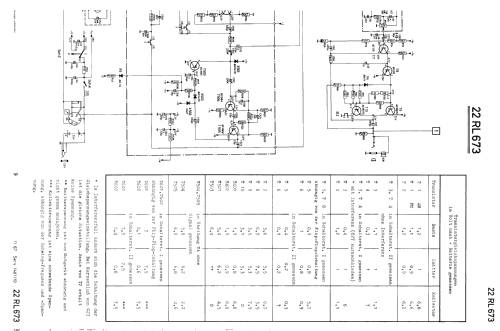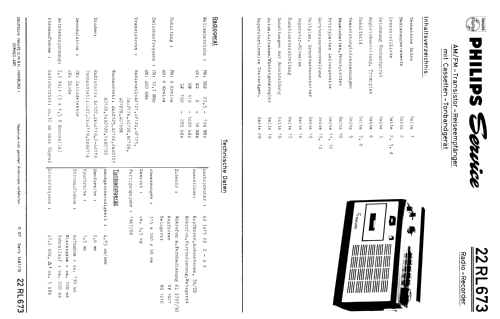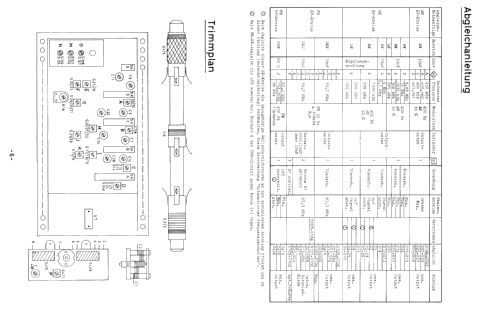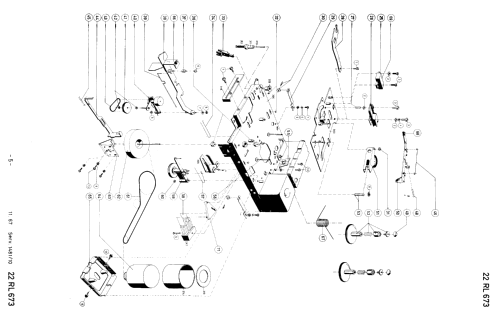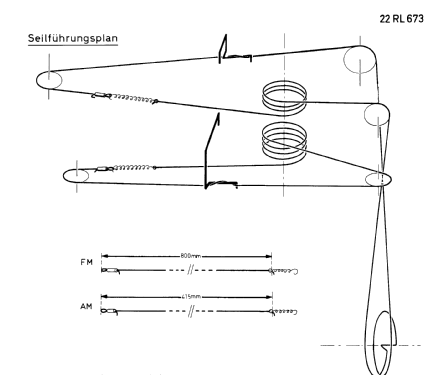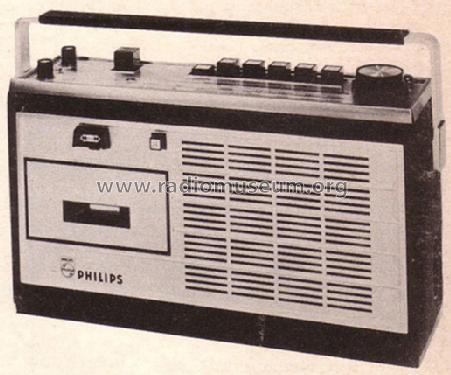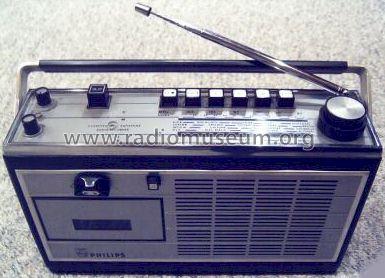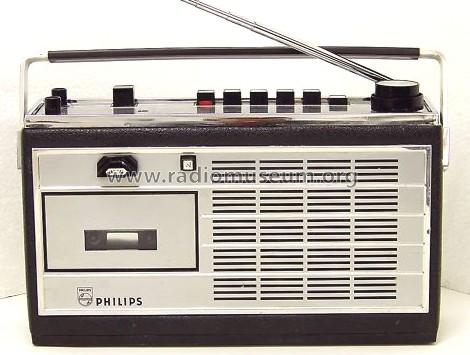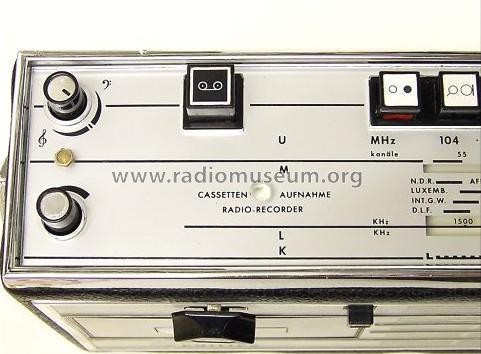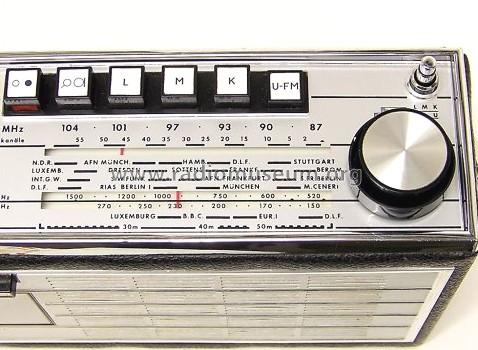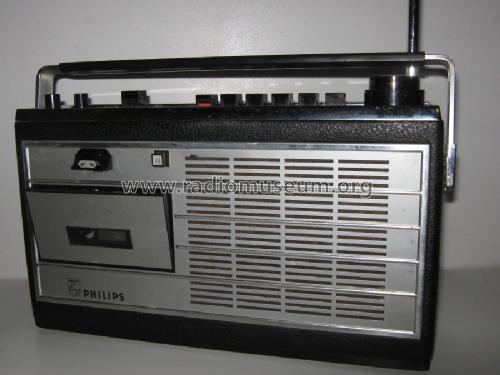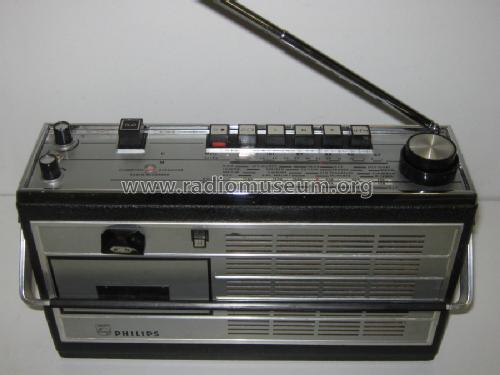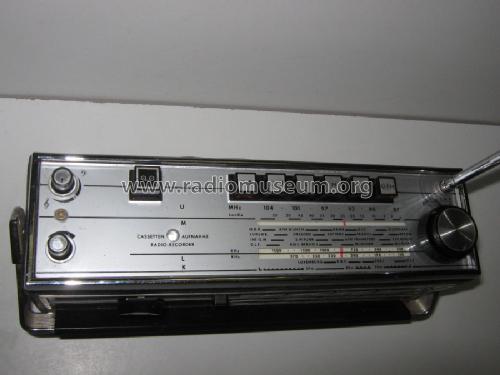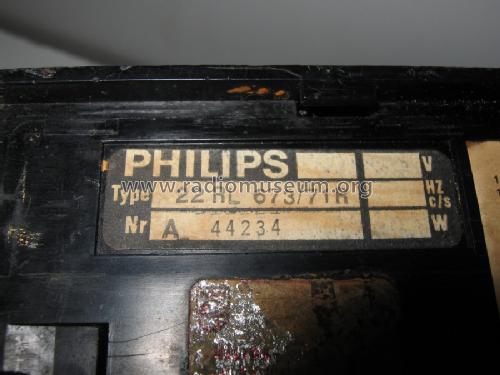Radio-Recorder 22RL673
Philips Radios - Deutschland
- Country
- Germany
- Manufacturer / Brand
- Philips Radios - Deutschland
- Year
- 1967/1968
- Category
- Broadcast Receiver - or past WW2 Tuner
- Radiomuseum.org ID
- 6942
-
- Brand: Deutsche Philips-Ges.
Click on the schematic thumbnail to request the schematic as a free document.
- Number of Transistors
- 22
- Semiconductors
- AF121 AF124 AF125 AF126 AF126 AC125 AC125 AC125 AC125 AC126 BC109 AC187 AC188 BC109 BC108 BC109 BC108 BC108 AC127 AC125 AC127 AC128 BA102 AA119 BA114 OA47
- Main principle
- Superheterodyne (common); ZF/IF 460/10700 kHz
- Tuned circuits
- 6 AM circuit(s) 9 FM circuit(s)
- Wave bands
- Broadcast, Long Wave, Short Wave plus FM or UHF.
- Details
- Cassette-Recorder or -Player
- Power type and voltage
- Batteries / addl. power jack / D: 5 × 1,5 / DC 7,5 Volt
- Loudspeaker
- Permanent Magnet Dynamic (PDyn) Loudspeaker (moving coil) / Ø 10 cm = 3.9 inch
- Power out
- 1.5 W (unknown quality)
- Material
- Plastics (no bakelite or catalin)
- from Radiomuseum.org
- Model: Radio-Recorder 22RL673 - Philips Radios - Deutschland
- Shape
- Portable set > 8 inch (also usable without mains)
- Dimensions (WHD)
- 315 x 180 x 90 mm / 12.4 x 7.1 x 3.5 inch
- Notes
-
AFC; Kassettenrecorder auch für Aufnahme.
Netzbetrieb mit zusätzlichem Netzteil NG1216 möglich.
- Net weight (2.2 lb = 1 kg)
- 3.5 kg / 7 lb 11.3 oz (7.709 lb)
- Source of data
- Handbuch VDRG 1967/1968 / Radiokatalog Band 1, Ernst Erb
- Mentioned in
- -- Original-techn. papers.
- Other Models
-
Here you find 2540 models, 2251 with images and 1555 with schematics for wireless sets etc. In French: TSF for Télégraphie sans fil.
All listed radios etc. from Philips Radios - Deutschland
Collections
The model Radio-Recorder is part of the collections of the following members.
Forum contributions about this model: Philips Radios -: Radio-Recorder 22RL673
Threads: 1 | Posts: 1
Herr Franz Harder hat Beiträge in der Funkschau 9 und 14/1967 über dieses Gerät verlinkt. Es ist ein technischer Artikel, den ich um die Abläufe während der Entwicklung ergänzen möchte, da vielleicht interessant. Solche Information dringt ja kaum in die Öffentlichkeit. Aber da wenig technischer Inhalt vorliegt siehe meinen Blog.
Übrigens: Der Link geht nach extern, aber wieder auf mich selbst, also quasi intern. Bitte um Verzeihung. Wer will muss ihn nicht beachten, da er über "Profil" auch dorthin gelangen kann, aber unbequemer. Literaturhinweise gehen ja auch nach extern.
Rudolf Drabek, 19.Sep.15


